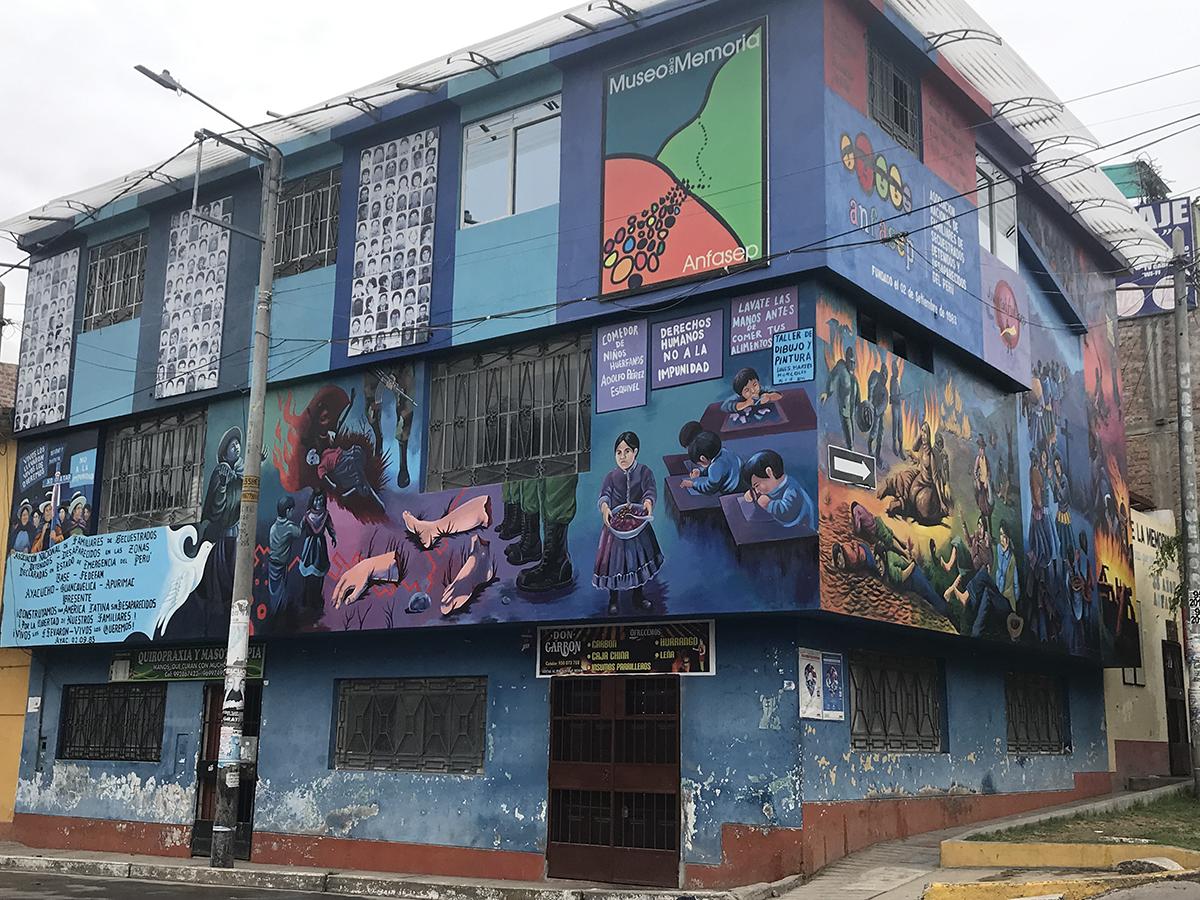
by Gloria Macedo-Janto, PhD Student, Department of Romance Languages
To better understand a 20-year period of political violence in Peru, in this project I analyze the testimonies of Andean women, especially from the Ayacucho area, to make visible their contribution to the reconstruction of an important part of Peruvian history. In accordance with their worldview and their roles as women, in their tragic and painful testimonies they tell how they suffered ethnic and gender discrimination, and it is observed that they are capable of recalling many details and telling their experiences from different perspectives and with their own narrative.
From 1980 to 2000, citizens throughout Peru suffered due to the actions of Shining Path (Partido Comunista del Perú Sendero Luminoso, PCP-SL), Revolutionary Movement Tupac Amaru (Movimiento Revolucianio Tupac Amaru, MRTA), and the Peruvian State itself, but the most affected were the inhabitants of the Andes. Since before the violence began they lived unprotected and in a situation of neglect. The violence increased scarcity of resources and social problems and decreased access to education.
During 2002 and 2003, the Truth and Reconciliation Commission (Comisión de la Verdad y Reconciliación, CVR) collected testimonies about this period and included some of them later in the “Final Report” published in 2003. They were also presented in public hearings and broadcast on national television. Their voices had not been represented before or taken into account by the State. In other testimonies collected by academic researchers, these women have not had the opportunity to fully represent themselves. The consequences of violence in memory and in the body were present in the speeches of the participants. In several of the testimonies collected by the CVR, Andean women say that they received mistreatment from both sides of the conflict: the subversive groups and the Armed Forces.
Through the painful stories about the loss of their relatives or of the violence exerted directly against themselves, verbally or physically, they are building testimonies that become particular narratives supporting the idea that “women can recall personal events more fully and vividly than men” (Leydesdorff et al 3). Their testimonials take into account their status as women, especially as Andean women, and their worldview, which is committed to their community. In that context, victims have the urge to narrate. They speak considering their role, which is established by their cosmovision, under the norms and customs that guide their community in order to lead a harmonious life with their peers and with nature.
According to the CVR, the number of women killed and disappeared is 20 percent of the total number of cases. Hence, it can be inferred that the majority of the dead and disappeared were men. They were indigenous and 75 percent Quechua-speaking, and Ayacucho was the region where 45 percent of the tortures were reported. In addition, of a total of 16,885 people who gave their testimony to the CVR, 54 percent were women and 46 percent men.
Due to the fact that the testimonies were collected between 2002 and 2003, and that the acts of the conflict have been registered since 1980, the women who gave testimony for the final report were almost always adults who were direct witnesses to and victims of the violence. They describe the consequences of the physical mistreatment, harassment, or violations they endured.
The lives of the Andean women who appear in the testimonies were spent in the fields, in charge of housework and the farm, or dedicated to the work of their community. As adult women, they formed their own families and, many times, were left caring for their children when their husbands or partners left home. In other cases, they were girls who, during the conflict, were eyewitnesses to the murders of their relatives or members of their community right in their homes.
The women organized themselves into mothers’ associations. In 1983, in the midst of the internal conflict, several women including Angélica Mendoza de Ascarza formed what would later become the National Association of Relatives of the Kidnapped-Detained-Disappeared in Areas under a State of Emergency (Asociación Nacional de Familiares de Secuestrados-Detenidos-Desaparecidos en Zonas bajo Estado de Emergencia, or ANFASEP). In 2006, this association created the Memory Museum in Huamanga, Ayacucho.
These women were the ones who went to look for their disappeared relatives, the ones who took care of the children who were orphaned at home, and the ones who had to support and try to rebuild a disintegrated home amid trauma and economic damages. They faced a bleak future, without hope, in addition to facing the abandonment of the State and its lack of interest in enforcing their fundamental rights.
Within Quechua cosmovisions, like Andean men, the concept of woman is configured as a duality as explained by Estermann (1998) and Ortiz (1993). She is at the same time an individual and a collective subject, which is due to her community. Andean women establish relationships based on what their worldview indicates, both the symbolic representations of female figures and the mythical representations that explain Andean logic (Viera 96). As a consequence of the actions of violence, death, and disappearances, their role in the world and within their community is disrupted. They are forced into a complex task, to adapt themselves to new structures, for which, many times, they do not have the necessary tools.
—Gloria Macedo-Janto received a 2022 CSWS Graduate Student Research Grant for this project.
References
Barrig, Maruja. El mundo al revés. Imágenes de la mujer andina. CLACSO, 2001.
Comisión de la Verdad y Reconciliación CVR. Informe Final. CVR, 2003.
Estermann, J. Filosofía andina. Estudio intercultural de la sabiduría autóctona andina. Abya-Yala, 1998.
Jiménez, G. Rituales de vida en la cosmovisión andina. Plural editores, 2003.
Leydesdorff, S. “Gender and Memory Ten Years On.” Leydesdorff. S., Passerini L., and P. Thompson (Eds.). Gender and Memory (pp. vii-xvi). Routledge, 2017.
Ortiz, Alejandro. La pareja y el mito. Estudios sobre las concepciones de la persona y de la pareja en los Andes. PUCP, 1993.
Viera, Sara. Imaginario andino y representación femenina en el testimonio Hijas de Kavillaca. Lima. UNMSM, 2009.

